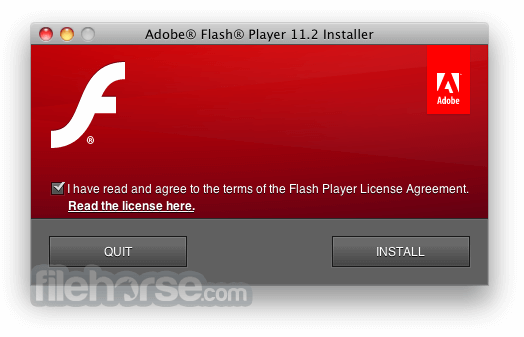
- #Adobe flash player for mac plugin how to
- #Adobe flash player for mac plugin update
- #Adobe flash player for mac plugin password
And if you haven’t already fully removed Flash from you Mac, read on…Īdobe officially dropped support for Flash on January 1, 2021.
#Adobe flash player for mac plugin update
If you see any request to update Flash player, you can assume it’s malware/spam. Update 1/12: After ending support on January 1, Adobe is now blocking all Flash content from running as of today, January 12, 2021.
#Adobe flash player for mac plugin how to
Read along for how to fully remove Adobe Flash from your Mac. And with that, Adobe is strongly recommending users uninstall it from their computers immediately. The button was most likely added after both Mozilla and Chrome added content blocking features to their respective browsers however, to be fair, Apple rolled out Intelligent Tracking Prevention long before its two rivals.After a three-year warning, the end of Adobe Flash has officially happened. The Privacy Report button is more of a marketing stunt to make users remember that Safari also blocks tracking scripts. The new button doesn't do much except show statistics about the number of trackers Apple's proprietary Intelligent Tracking Prevention system has blocked on each website the user is visiting. New Privacy Report buttonĪnd last but not least, Apple is also adding a Privacy Report button to Safari's toolbar. Once it ships with Safari, OTP codes sent to users' devices via SMS will be automatically filled inside the Safari browser as a security measure against certain phishing attacks that can bypass two-factor authentication. SMS OTP autofillĪnother feature added to Safari on iOS is support for the new SMS one-time passcode (OTP) format.Īs ZDNet reported earlier this year, the feature originated in the Safari team and has recently gained Google's support. Until today, Face ID and Touch ID have been used as a user authentication method for native apps only. Starting with Safari 14, if a website supports WebAuthn-based authentication, Safari will let users use their fingerprint or face to log into online accounts via their browsers. In addition, Apple is also adding support for Face ID and Touch ID authentication inside Safari.
#Adobe flash player for mac plugin password
Users will be asked to change their passwords, and the Safari prompt will take users directly to each website's change password page - if publicly known. Starting this fall, Apple says that Safari 14 will scan a user's locally-stored passwords and show a prompt if one or more of the user's credentials are present in publicly available lists of breached accounts. Apple has also added support for another cool feature, namely breach alerts, already present in both Chrome and Firefox. Breach alertsīut Safari hasn't been lagging behind other browsers just in terms of HTTP/3 and WebP support. The format, created by Google, serves as an alternative to the older JPEG format, and Safari has been the last browser to add support for it. WebPĪnother important addition in Safari is support for WebP, a lightweight image format that has been gaining widespread adoption across the internet. With adoption rates growing and after HTTP/3 made it into Chrome, Firefox, Edge, and others, Safari was expected to add HTTP/3 support in order to keep in sync with its rivals.

One of the new technologies added to Safari is support for HTTP/3, a new web standard that will make loading websites faster and safer.Ĭurrently, according to W3Techs, most of today's websites are loaded either via HTTP/1.2 or HTTP/2.0, but HTTP/3 is slowly gaining ground, with HTTP/3 support being already present on 6% of all internet sites.


HTTP/3īut while old stuff is being removed, new stuff is also being added. Safari 14 is also an end of an era, as this will be the first version of Safari that won't support Adobe Flash Player content.įlash Player is scheduled to reach end-of-life on December 31, 2020, and will be removed from other major browsers as well. What this means for Safari users is that starting this fall, they'll see a huge influx of new Safari extensions as add-on developers are expected to port their existing Chrome and Firefox extensions to work on Apple's browser as well.Īpple said that, for now, WebExtensions will only be available for Safari on macOS. The WebExtension API was initially developed for Chrome but has since been also adopted to Firefox, Opera, Vivaldi, and Edge, and has become the universal standard for creating cross-browser add-ons using common technologies like HTML, JavaScript, and CSS. The biggest and most important of the new additions is support for WebExtensions, a technology for creating browser extensions. While Safari didn't get too much of the spotlight at WWDC, Safari 14, scheduled to be released later this fall with iOS 14 and macOS 11, is a release that is packed choke-full with features. After the flashy presentations of WWDC 2020, Apple has now published more details about some of the new features that are coming to some of its products.


 0 kommentar(er)
0 kommentar(er)
